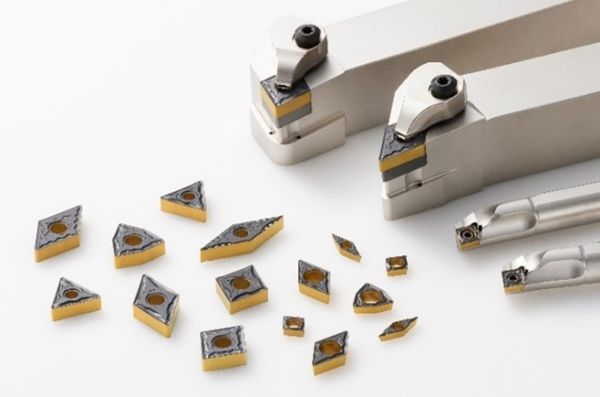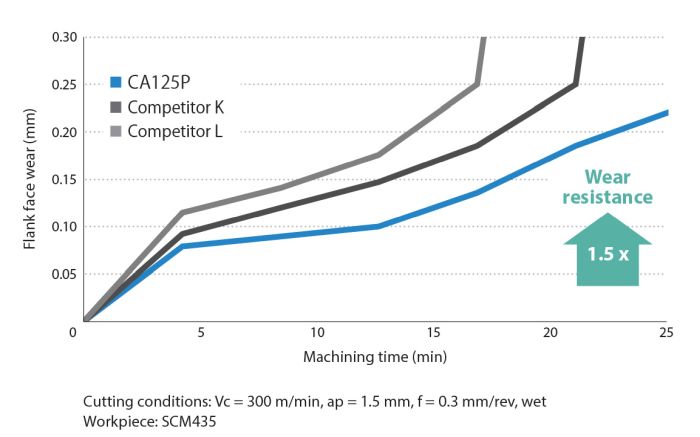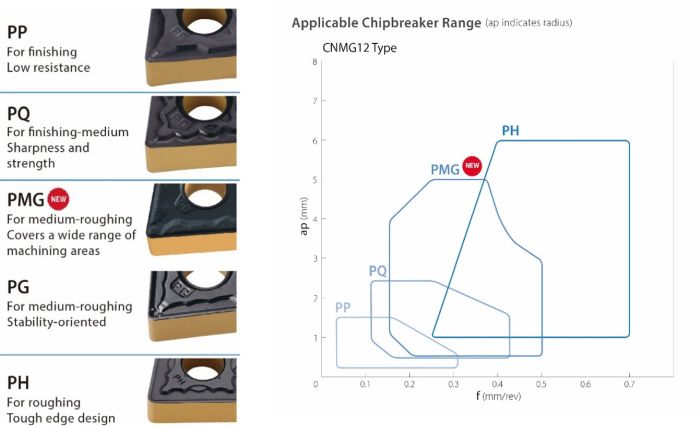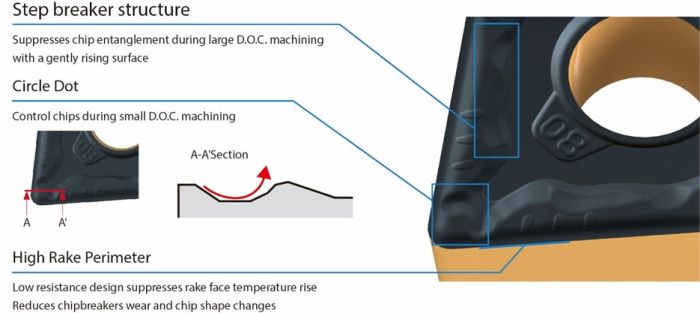Kyocera launches new CVD coated carbide grades CA115P and CA125P for steel turning
New technology provides 1.5X better wear resistance through industry-leading uniformity in alumina crystal orientation.
- Industrial Tools
Kyoto/Neuss - Kyocera Corporation has introduced new CVD coating materials, CA115P and CA125P, for turning insert grades used in automotive and industrial steel machining. The new coating technologies achieve a high level of wear and fracture resistance, resulting in a long tool life. The CA125P was released in late March of this year, and the CA115P will be available starting in June. In addition, Kyocera introduced a PMG chipbreaker, which covers a wide range of machining applications, in late March of this year, along with the new insert grades.
Newly developed coating and carbide substrate
The new CA115P and CA125P insert grades - the main grades for external and internal turning for steel machining - have a newly developed coating and carbide substrate. The new coating achieves the industry’s highest level*1 of uniformity in alumina crystal orientation through Kyocera's proprietary crystal forming technology during the CVD (Chemical Vapor Deposition) process, which helps to ensure outstanding wear resistance. By combining this ultra-uniform alumina layer with a unique TiCN layer and new carbide substrate with greater high-temperature strength, the insert grades achieve higher wear resistance and fracture resistance, as well as long tool life and stable machining. In addition, the PMG chipbreaker supports various machining conditions, from medium machining to roughing, making it possible to consolidate tools and contribute to productivity improvement.
Kyocera will continue helping customers to improve productivity by supplying products that provide better performance, cost efficiency, and functionality.

Product overview
| Product name | CA115P | CA125P | |
|---|---|---|---|
| No. of models |
502 models |
502 models | |
| Launch date |
Scheduled for August 2023 |
March 2023 | |
| Price | Please contact our sales representatives |
||
| Processing type | Turning (external and internal turning) | ||
| Applications | Automotive, construction machinery, general industrial machinery, etc. | ||
| Recommended workpieces | Carbon steel, alloy steel, alloy tool steel | ||
Features of the new CA115P and CA125P insert grades
1. Newly developed proprietary coatings achieve higher wear and fracture resistance
The newly developed CVD coating has a highly uniform alumina layer with outstanding wear resistance, and a TiCN layer with excellent fracture resistance, which provide significant benefits in steel machining. In particular, Kyocera's proprietary crystal forming technology to ensure a highly uniform alumina layer during the CVD (Chemical Vapor Deposition) process has successfully raised the uniformity of alumina crystal orientation to the highest level in the industry, resulting in approximately 1.5 times*2 higher wear resistance compared to conventional products. It also reduces crater wear on the rake face due to chip scraping, which provides long tool life and stable machining.


2. Improving productivity in a wide range of machining conditions
CA125P grades support a wide range of machining conditions, from continuous to heavy interrupted machining, and are highly versatile main grades. CA115P grades are for highefficiency machining in continuous to light-interrupted machining, contributing to productivity improvement through long tool life and stable machining.
About Kyocera’s PMG chipbreaker for steel machining
A chipbreaker is a groove or protrusion in the rake face of a tool insert to divide and control chips generated when turning. There are different types of chipbreakers for various machining applications and conditions. Kyocera's new PMG chipbreaker has a design developed using Kyocera's proprietary expertise to achieve smooth chip evacuation in medium-roughing. In addition, the low-cutting-force design of the cutting edge suppresses crater wear on the rake face, which enables lasting chip evacuation, further contributing to longer tool life and stable machining.


*1Research by Kyocera as of March 2023.
*2Comparison data gathered by Kyocera as of February 2023.

